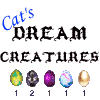Post by Dark One on Jun 9, 2006 21:27:04 GMT 11
Ever wondered where Tolkien got the idea for his Ring of Power? This may shed some light on it:
Divine Inspiration
Within each of Britain’s stately houses lie collections of dazzling quality. And that of The Vyne, which this summer celebrates 50 years with the National Trust, is no different. Set in a sleepy Hampshire hollow, this romantic house belongs to the small group of British Manorial homes built by some of Henry VIII’s most sophisticated courtiers. . Impressive but intimate, its rooms illustrate the development of the country house taste over five centuries and are filled with wonderful tapestries, shimmering lacquer cabinets and Italian marble. But within this collection there lies a particular gem that for years has gone unnoticed by most visitors – despite the fact that it comes with the whisper of a sensational story. It is a golden Roman ring. Read its tale here:
Precious Metal
Placed for years within a glass-topped cabinet, beside a little type-written note, this solid gold ring may have caught the eye of specialist – but for most it may warrant no more than an admiring glance. Made in the fourth or fifth century, with its chunky bezel mounted on a faceted ten-sided hoop, it is engraved with a compelling, if primitive, profile of Venus. This goddess is no beauty, with her exaggerated nose, spiky headdress and one oversized eye. The ring was discovered in the late eighteenth century by a farmer at the remains of the nearby Roman town of Silchester. No one knows quite how the ring came to The Vyne, but its story did not stop there.
By an extraordinary coincidence, just a couple of decades after its discovery, a Roman lead tablet bearing an inscription about this very ring was found at a temple site near Lydney in Gloucestershire. It was engraved with a curse imprecating woe upon the person who had stolen the ring. The original lead tablet is now at Lydney; but alongside this ring in the little cabinet is a replica, so the two can be admired together. By 1928 the great archaeologist Sir Mortimer Wheeler was at work excavating the rich finds at Lydney where he was told the tale of the two finds.
And, so some conjecture, it is almost certain that he would have passed this exciting story to another who was advisor to finds at Lydney – and expert in early English – an Oxford don, named Tolkien. A ring – and a curse. Enough to make anyone wonder: could this be the ring that inspired an iconic tale, my precious?
Divine Inspiration
Within each of Britain’s stately houses lie collections of dazzling quality. And that of The Vyne, which this summer celebrates 50 years with the National Trust, is no different. Set in a sleepy Hampshire hollow, this romantic house belongs to the small group of British Manorial homes built by some of Henry VIII’s most sophisticated courtiers. . Impressive but intimate, its rooms illustrate the development of the country house taste over five centuries and are filled with wonderful tapestries, shimmering lacquer cabinets and Italian marble. But within this collection there lies a particular gem that for years has gone unnoticed by most visitors – despite the fact that it comes with the whisper of a sensational story. It is a golden Roman ring. Read its tale here:
Precious Metal
Placed for years within a glass-topped cabinet, beside a little type-written note, this solid gold ring may have caught the eye of specialist – but for most it may warrant no more than an admiring glance. Made in the fourth or fifth century, with its chunky bezel mounted on a faceted ten-sided hoop, it is engraved with a compelling, if primitive, profile of Venus. This goddess is no beauty, with her exaggerated nose, spiky headdress and one oversized eye. The ring was discovered in the late eighteenth century by a farmer at the remains of the nearby Roman town of Silchester. No one knows quite how the ring came to The Vyne, but its story did not stop there.
By an extraordinary coincidence, just a couple of decades after its discovery, a Roman lead tablet bearing an inscription about this very ring was found at a temple site near Lydney in Gloucestershire. It was engraved with a curse imprecating woe upon the person who had stolen the ring. The original lead tablet is now at Lydney; but alongside this ring in the little cabinet is a replica, so the two can be admired together. By 1928 the great archaeologist Sir Mortimer Wheeler was at work excavating the rich finds at Lydney where he was told the tale of the two finds.
And, so some conjecture, it is almost certain that he would have passed this exciting story to another who was advisor to finds at Lydney – and expert in early English – an Oxford don, named Tolkien. A ring – and a curse. Enough to make anyone wonder: could this be the ring that inspired an iconic tale, my precious?





















